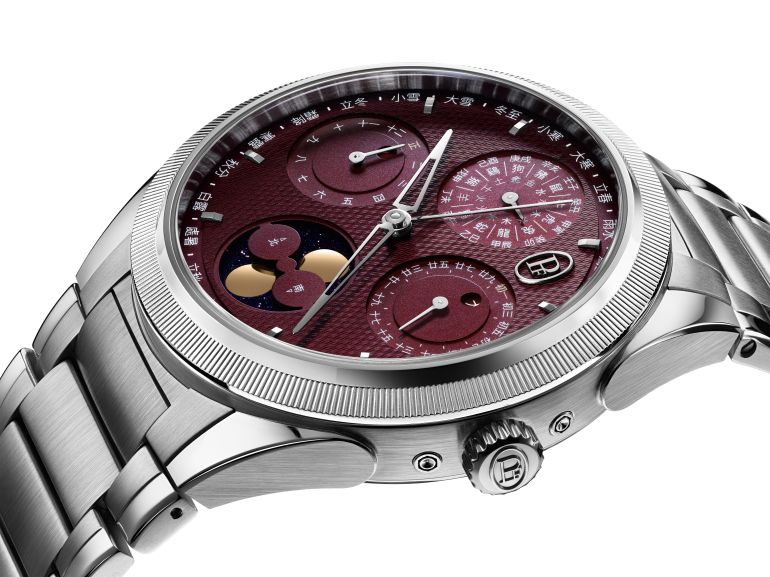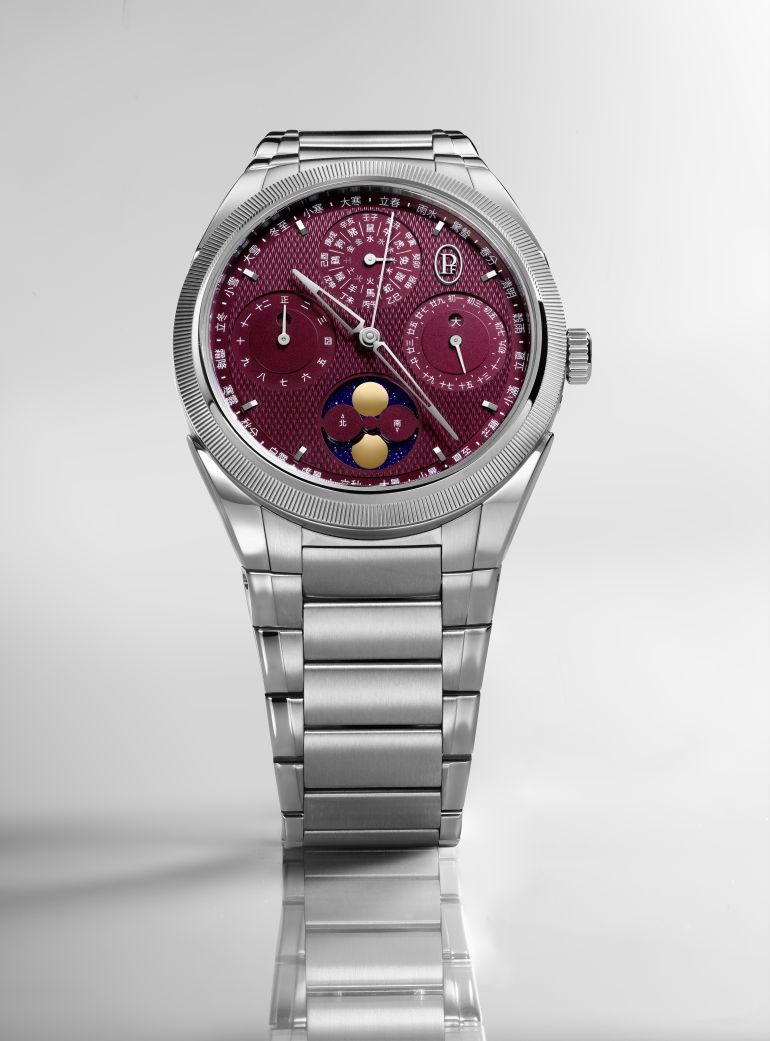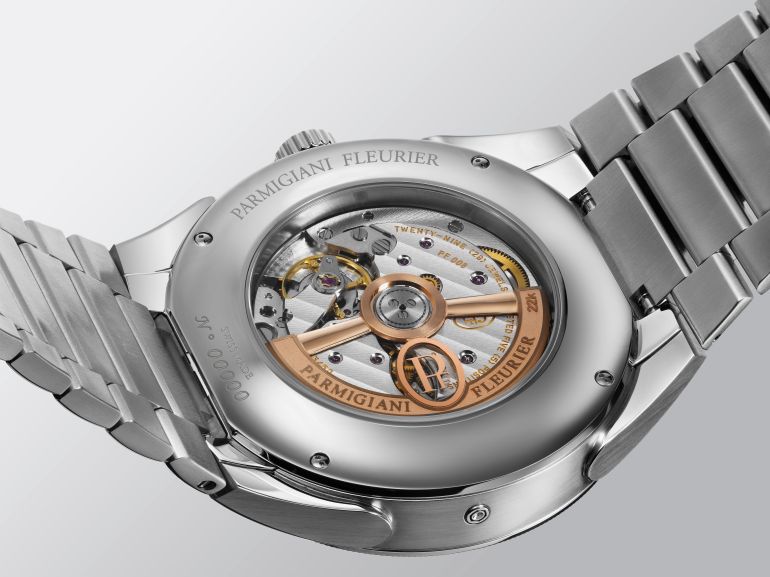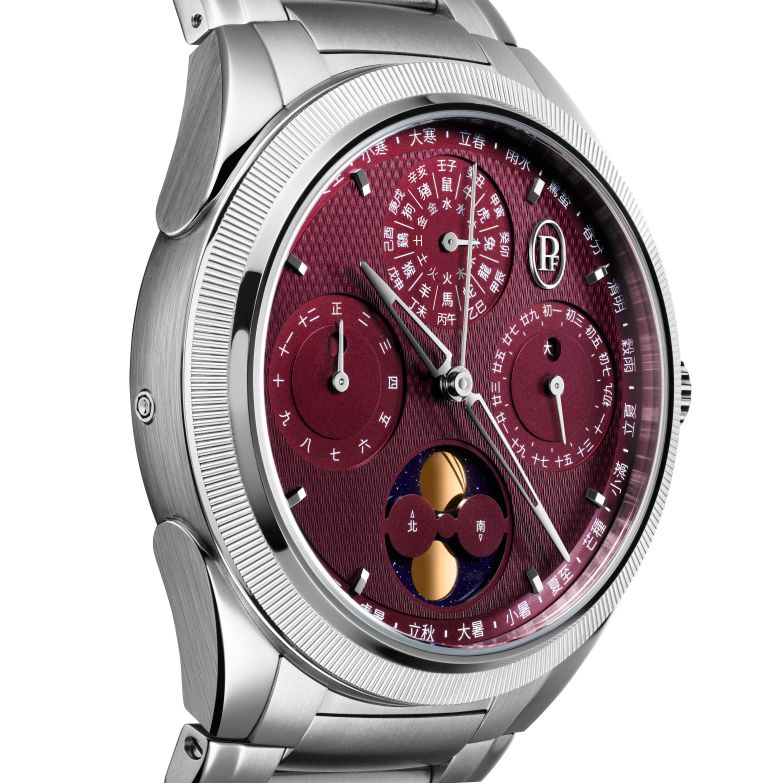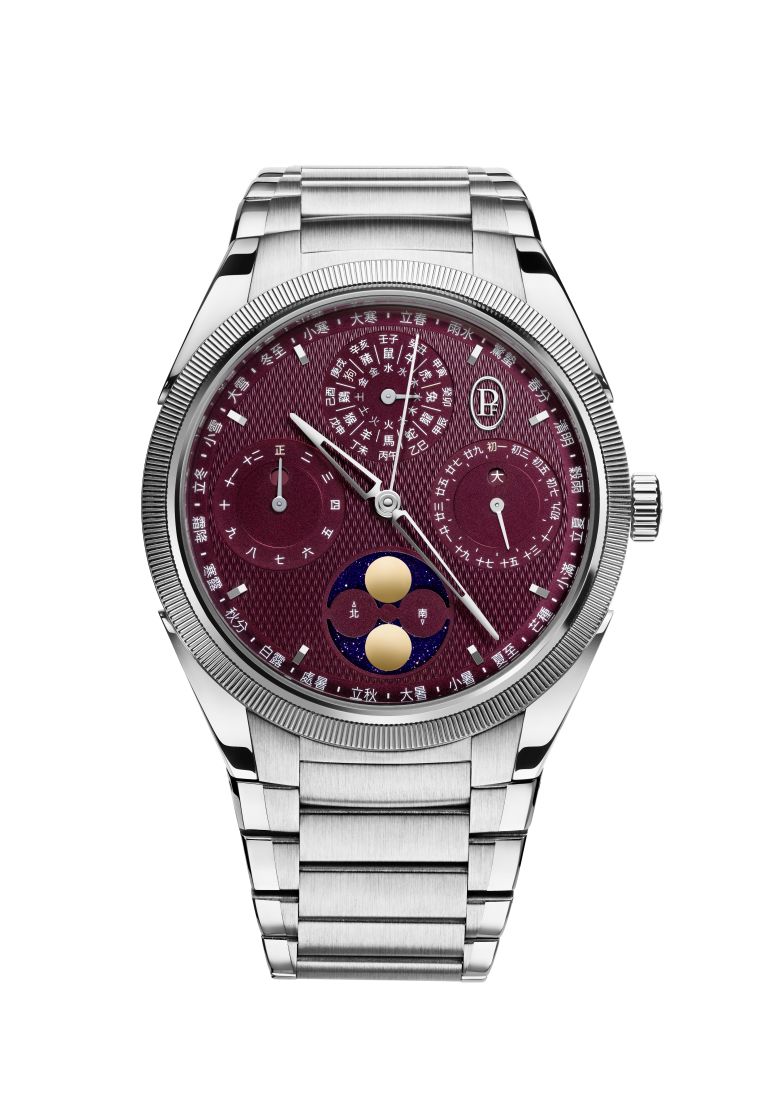
Unlike the Gregorian calendar, which names months and numbers years, the Chinese calendar names lunar years and numbers months. The names of the years are repeated on a 60-year sexagesimal cycle, but the calendar including dates, days and months is calculated on the basis of astronomical observations and varies. Since these calculations change, it is impossible to create a 'perpetual' Chinese calendar. The numbering system of the units of time is based on the combination of a decimal cycle, the ten Heavenly Legs, and a duodecimal cycle, the twelve Earthly Branches.
Tonda PF Xiali by Parmigiani Fleurier has a case (42 mm) and integrated bracelet made of steel and a platinum bezel. The indications, displayed on the imperial red dial, are as follows: name of the year/animal and its element at 12 o'clock (and association with the yīn-yáng cycle; indication of the number of the day of the month (from 1 to 29 or from 1 to 30, depending on the length of the month) at 3 o'clock, with a window indicating the length of the current one; moon phases at 6 o'clock; indication of the number of the month (from 1 to 12) with a window for the extra-lunar month at 9 o'clock.
The movement is the PF008 calibre (28,800 vibrations per hour, 42 jewels, 54-hour power reserve), finely decorated, visible from the back side, mechanical automatic and with a 22-carat pink gold skeletonised rotor.
Price: 59,000 Swiss francs.


